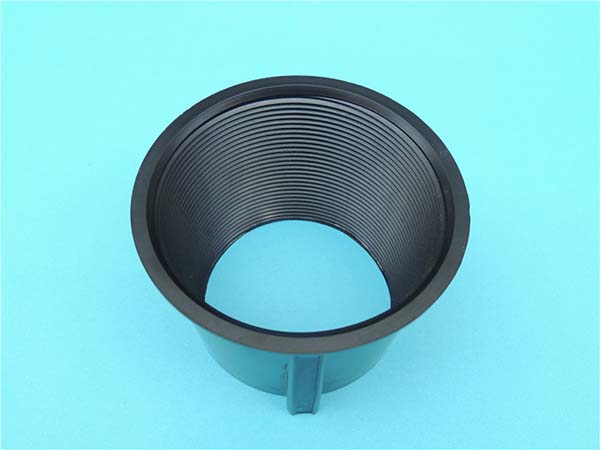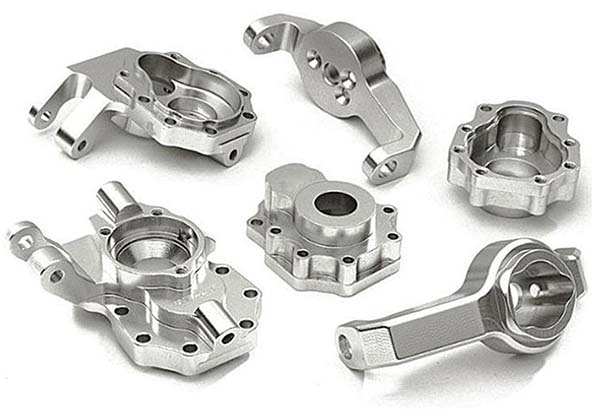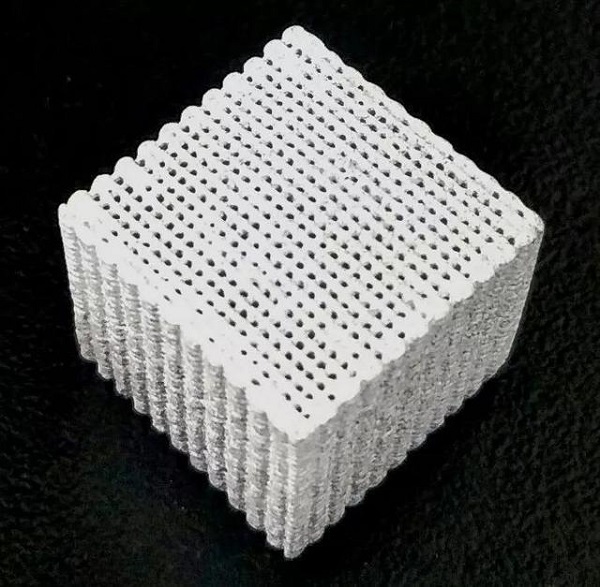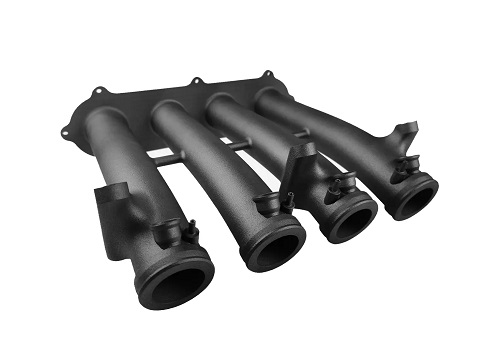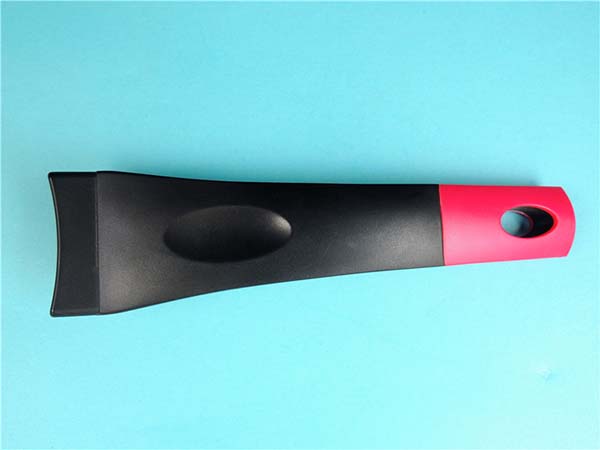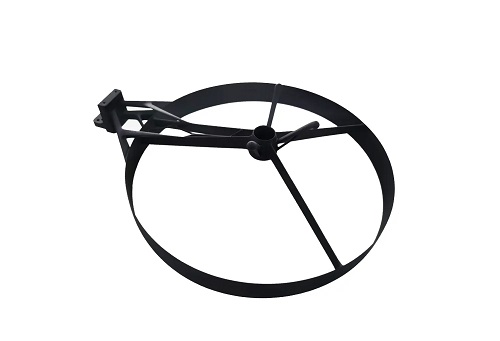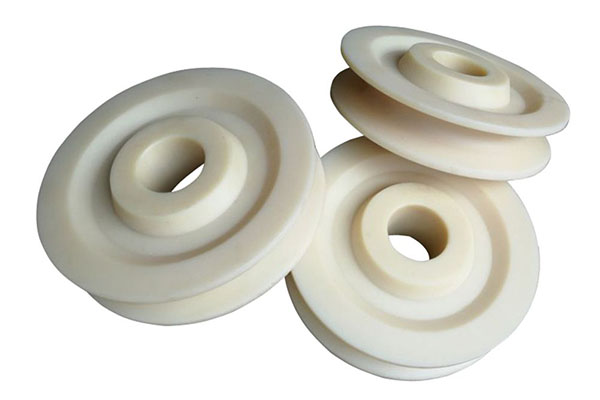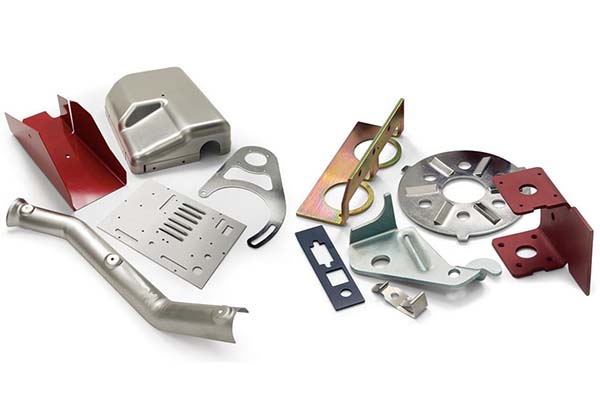1. Introduction
In recent years, 3D printing technology, also known as additive manufacturing, has been making waves across various industries. What was once a niche concept has now transformed into a revolutionary manufacturing method, with applications spanning from aerospace to healthcare, and from automotive to consumer goods.
The journey of 3D printing has been marked by continuous innovation. Initially, it was mainly used for creating prototypes due to limitations in materials and precision. However, as technology advanced, we witnessed significant improvements. For instance, the development of new materials like high - strength polymers and metal alloys has broadened the scope of what can be 3D printed. Moreover, the enhancement of printing resolution has made it possible to produce highly detailed components.
Against this backdrop, 3D printed fan blades have emerged as a fascinating application. Fan blades play a crucial role in a wide range of equipment, from industrial cooling systems to aircraft engines. The traditional manufacturing methods for fan blades, such as casting and forging, have their own limitations. So, how do 3D printed fan blades stack up? Are they really a better alternative? Let's delve deeper into this topic to find out the answers.
2. What are 3D Printed Fan Blades?
3D printed fan blades are exactly what they sound like - fan blades created through the 3D printing process. But to truly understand them, we need to look at the underlying manufacturing principles and processes.
Manufacturing Principle
At its core, 3D printing, or additive manufacturing, builds objects layer by layer. Instead of subtracting material from a larger block like in traditional machining (such as milling or turning), 3D printing adds material in precise layers based on a digital 3D model. For fan blades, a CAD (Computer - Aided Design) file is first created. This file contains all the geometric information about the fan blade, including its shape, size, and any complex internal structures.
The Printing Process
- Material Selection: The choice of material is crucial. For 3D printed fan blades, common materials include engineering plastics like ABS (Acrylonitrile Butadiene Styrene), PLA (Polylactic Acid), and more advanced materials such as carbon - fiber - reinforced polymers. In some high - performance applications, metal powders like aluminum or titanium alloys can be used. For example, in aerospace applications where high strength - to - weight ratio is essential, titanium alloy 3D printed fan blades are being explored.
- Slicing the Model: Once the design is complete, the 3D model is sliced into thin cross - sectional layers by specialized software. Each layer represents a thin slice of the final fan blade, and the software calculates the path that the 3D printer's nozzle (in the case of Fused Deposition Modeling - FDM, a common 3D printing technology) or laser (in Powder Bed Fusion - PBF technologies) will follow to deposit or fuse the material.
- Printing: During the printing process, the 3D printer follows the instructions from the sliced model. In FDM, a heated nozzle extrudes a thin filament of melted plastic layer by layer, gradually building up the fan blade. In PBF, a high - power laser selectively fuses metal powder particles together in each layer.
- Post - processing: After printing, the fan blade usually requires post - processing steps. This may include removing support structures (if any were used during printing to hold the complex geometries in place), sanding to improve surface finish, and heat - treating (especially for metal 3D printed fan blades) to enhance mechanical properties.
Compared to traditional manufacturing methods like casting (where molten metal is poured into a mold) or forging (where metal is shaped under high pressure), 3D printing offers a more flexible and precise way to create fan blades. It allows for the production of complex geometries that are difficult or even impossible to achieve with traditional methods, opening up new possibilities for optimizing fan performance.
3. Comparison with Traditional Fan Blades
When evaluating 3D printed fan blades, it's essential to compare them with their traditional counterparts. Here is a detailed comparison in terms of materials, manufacturing processes, performance, and cost:
| Comparison Items | Traditional Fan Blades | 3D Printed Fan Blades |
| Materials | Limited to common metals (such as aluminum, steel) and some traditional plastics. For example, in industrial fans, aluminum alloy is often used due to its relatively good strength - to - weight ratio and corrosion resistance. However, the choice of materials is somewhat restricted by the manufacturing process. | A wide range of materials can be used, including advanced engineering plastics like carbon - fiber - reinforced polymers. These materials can be tailored to specific requirements. For instance, in a high - performance computing cooling fan, a heat - resistant and lightweight plastic composite can be 3D printed to optimize heat dissipation and reduce weight. |
| Manufacturing Process | Casting involves pouring molten material into a mold, which can lead to issues like porosity and uneven material distribution. Forging requires high - pressure equipment and complex dies, making it less flexible for small - batch production. Machining is a subtractive process that wastes a significant amount of material. | The additive manufacturing process of 3D printing allows for complex geometries without the need for expensive molds or large - scale forging equipment. It is highly suitable for small - batch production or custom - made fan blades. The material is added layer by layer, resulting in minimal material waste. |
| Performance | Performance is somewhat restricted by the limitations of the manufacturing process and available materials. Complex aerodynamic designs are difficult to achieve, which may limit the efficiency of the fan. | 3D printed fan blades can be designed with optimized aerodynamic shapes. For example, internal cooling channels or variable - pitch blades can be integrated into the design, improving the fan's efficiency. Tests have shown that in some cases, 3D printed fan blades can reduce energy consumption by up to 20% compared to traditional blades in the same application scenarios. |
| Cost | High initial investment for molds and dies in casting and forging. For small - batch production, the cost per unit is extremely high because the cost of the mold needs to be amortized over a small number of products. Machining also has high labor and material waste costs. | Lower initial investment as there is no need for expensive molds. For small - batch production, 3D printing can be more cost - effective. However, for large - scale mass production, the current cost of 3D printing materials and the relatively slow printing speed may make traditional manufacturing methods more economical. |
From the above comparison, it's clear that 3D printed fan blades have their own unique advantages, especially in terms of design flexibility and performance optimization, although cost - effectiveness varies depending on production volume.
4. Yigu Technology's Perspective
As a non - standard plastic metal products custom Supplier, Yigu Technology views 3D printed fan blades as a remarkable innovation. Our advanced technology and rich experience enable us to offer customized solutions for 3D printed fan blades. We understand that different industries have unique requirements. For example, in the aerospace industry, the need for high - strength, lightweight materials is crucial, while in the automotive industry, heat dissipation and noise reduction are key factors.
Yigu Technology can select the most suitable materials, whether it's high - performance plastics or special metal alloys, to ensure the fan blades meet the strictest standards. Our team of experts can optimize the design of 3D printed fan blades according to specific applications, improving their efficiency and performance. We also provide comprehensive after - sales services, ensuring that our customers are satisfied with the products. With Yigu Technology, you can be confident in getting high - quality, customized 3D printed fan blades that perfectly fit your needs.
5. FAQ
5.1 What materials can be used for 3D printed fan blades?
Common materials for 3D printed fan blades include plastics like ABS, which is known for its strength and heat resistance, making it suitable for general - purpose applications. PLA is another popular choice, being biodegradable and having a relatively smooth finish, often used in less demanding scenarios. For high - performance applications, carbon - fiber - reinforced polymers are used due to their excellent strength - to - weight ratio. Metal alloys such as aluminum and titanium are also viable options, with aluminum offering good thermal conductivity and titanium providing high strength under extreme conditions, especially in aerospace applications.
5.2 How accurate are 3D printed fan blades?
The accuracy of 3D printed fan blades depends on the 3D printing technology used. For instance, in Fused Deposition Modeling (FDM), the layer thickness can range from 0.1 mm to 0.4 mm, which may affect the surface finish and overall accuracy. However, more advanced technologies like Stereolithography (SLA) can achieve layer thicknesses as low as 0.05 mm or even less, resulting in highly accurate and smooth - surfaced fan blades. High - accuracy 3D printed fan blades can closely match the designed aerodynamic profiles, improving performance by reducing turbulence and increasing efficiency.
5.3 Can 3D printed fan blades be repaired?
Yes, 3D printed fan blades can often be repaired. For plastic 3D printed fan blades, small cracks or damages can be repaired using plastic welding techniques. If the damage is more extensive, a 3D printer can be used to add additional material to the damaged area, following the original design. For metal 3D printed fan blades, techniques like metal deposition welding can be employed to repair minor defects. However, for severe damage, it may be more practical to print a new replacement blade, especially considering the relatively low cost of small - batch 3D printing.
